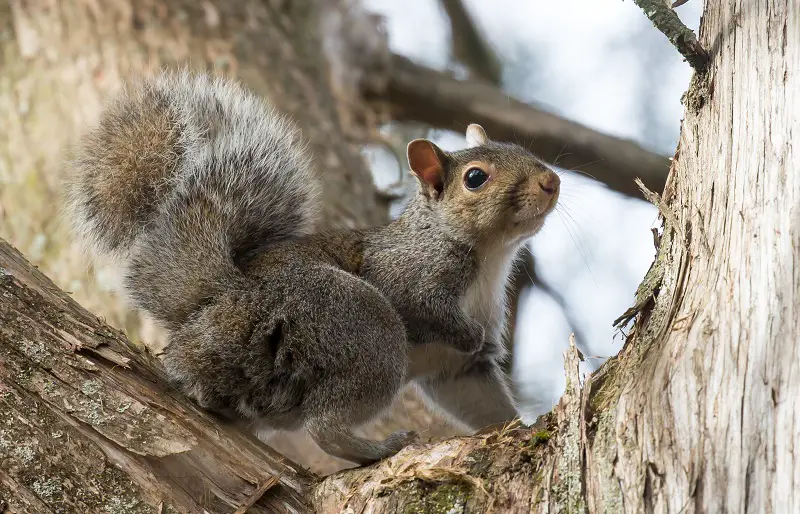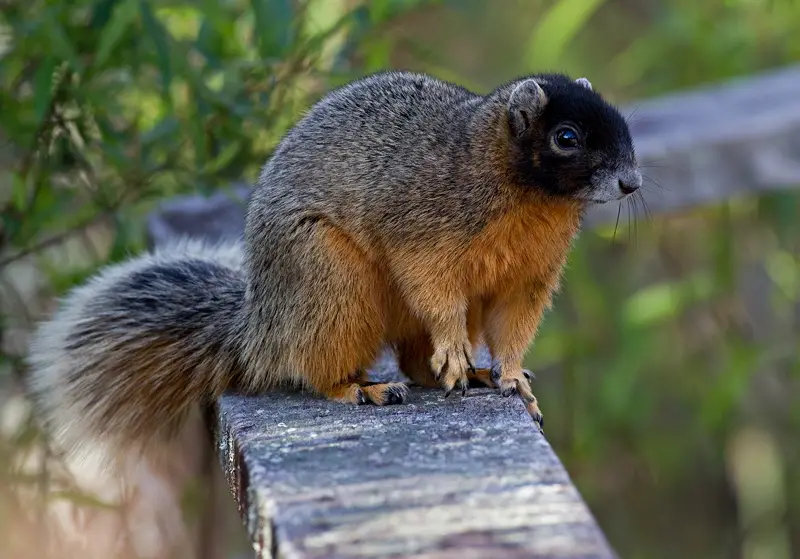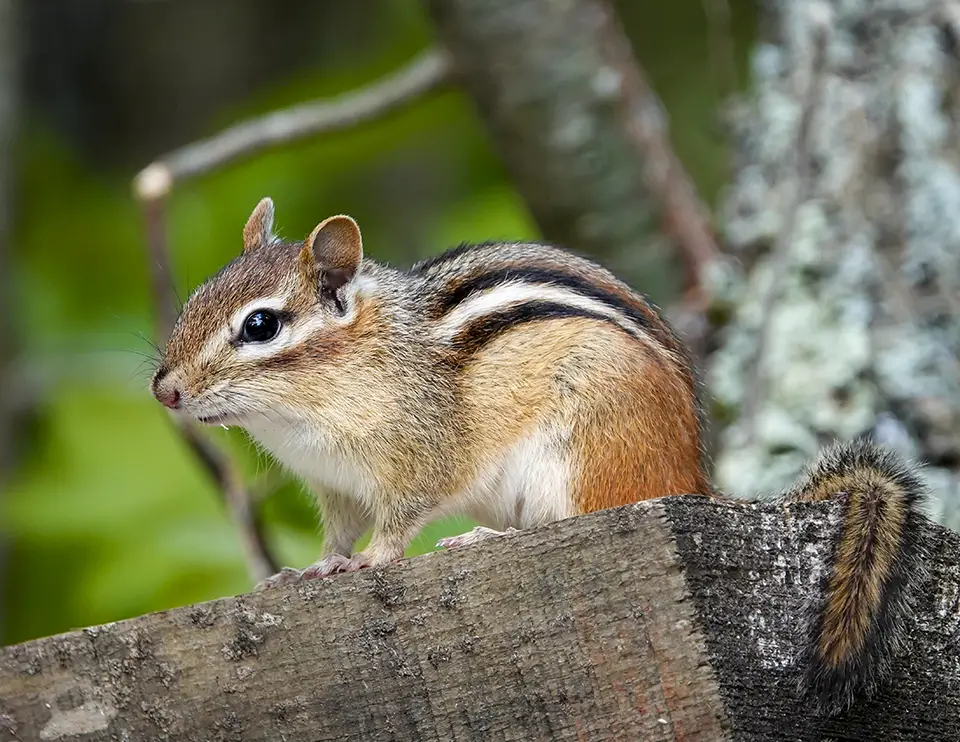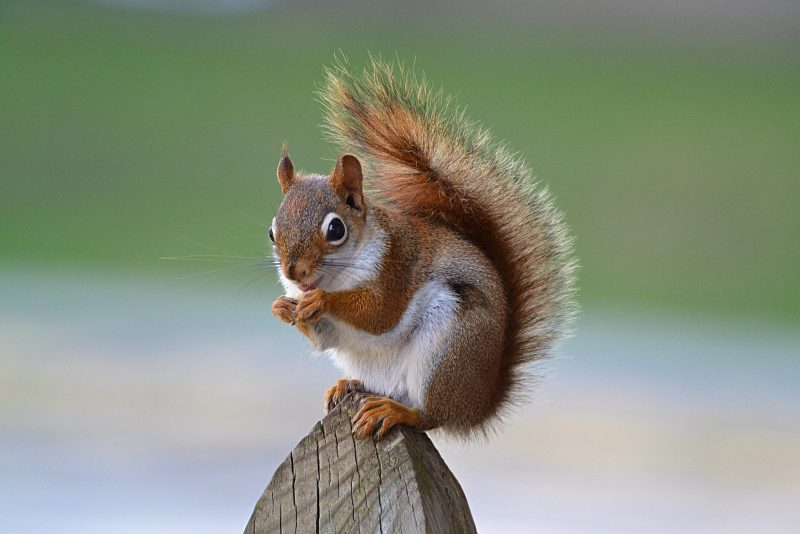Squirrels are a common sight across Kentucky, from dense forests to suburban backyards. Each species has distinct features, behaviors, and habitats, making them fascinating to observe up close.
Watching these agile rodents reveals their daily routines, including foraging, storing food, and interacting with other squirrels. Understanding their habits can enrich the experience of exploring parks, woodlands, and urban green spaces.
This guide covers the five most common squirrels in Kentucky, offering detailed identification tips, behavior insights, and habitat information. With clear descriptions and pictures, spotting and distinguishing each species becomes simple and enjoyable.
Eastern Gray Squirrel (Sciurus carolinensis)

Identification and Appearance
The Eastern Gray Squirrel is one of the most recognizable tree squirrels in North America. Its fur is predominantly gray, often with subtle brownish tones, while the underside is a lighter, almost white color. Adults typically measure 16–20 inches in length, including their bushy tail, which is used for balance and warmth. Their large, dark eyes and prominent ears give them an alert expression, reflecting their highly attentive and agile nature. Occasionally, you may find melanistic or unusually brown individuals, but the classic gray coloration dominates most of Kentucky.
Behavior and Activity
Eastern Gray Squirrels are diurnal, meaning they are active during the day, especially in the early morning and late afternoon. They are extremely agile climbers, leaping easily between branches and sometimes even from tree to roof in urban areas. Known for their intelligence, these squirrels exhibit impressive foraging skills. They frequently bury nuts and seeds in scattered locations—a behavior called “scatter hoarding”—and can remember the majority of these hiding spots for months, ensuring a steady food supply throughout the year.
Habitat and Range in Kentucky
In Kentucky, Eastern Gray Squirrels are highly adaptable and occupy a variety of habitats. They thrive in deciduous and mixed forests where oak, hickory, and walnut trees are common, providing ample food and shelter. They also adapt well to suburban and urban settings, often inhabiting parks, large backyards, and neighborhoods with mature trees. Their flexible habitat preferences make them one of the most commonly observed squirrels in the state.
Diet and Feeding Habits
These squirrels have a diverse diet, primarily feeding on nuts, seeds, fruits, buds, and occasionally insects or bird eggs. Acorns are particularly important in autumn, as they allow squirrels to build fat reserves for winter. Their scatter-hoarding behavior involves hiding food in multiple locations, reducing the risk of losing all their resources to theft by other animals. This strategy not only ensures survival during lean months but also plays a vital role in seed dispersal, benefiting forest ecosystems.
Spotting and Observation Tips
Eastern Gray Squirrels are most easily observed in tree canopies, along forest edges, or in open grassy areas during the morning. In winter, their gray fur blends with the bark of trees, making movement the primary cue for detection. Bird feeders and nut-bearing trees often attract them, offering excellent opportunities for watching their lively and acrobatic behaviors. Observing their interactions with the environment can reveal fascinating insights into their intelligence and adaptability.
Fox Squirrel (Sciurus niger)

Identification and Appearance
The Fox Squirrel is the largest tree squirrel commonly found in Kentucky, with adults reaching lengths of 20–28 inches, including their bushy tail. Their fur coloration varies widely, ranging from rusty orange to brownish-gray, often with a pale or white underside. The tail, a striking mix of gray and reddish tones, is especially noticeable during leaps or when the squirrel raises it in defensive displays. Compared to Eastern Gray Squirrels, Fox Squirrels appear bulkier and more robust, making them easy to distinguish in the wild.
Behavior and Activity
Fox Squirrels are diurnal, active mainly during the day, with peaks in the morning and late afternoon. Unlike their gray counterparts, they spend much of their time foraging on the ground, often digging for nuts and seeds. These squirrels are solitary and highly territorial, frequently defending their feeding areas with loud, sharp warning calls to deter intruders or alert others to predators. Their combination of ground-foraging habits and vocal behavior makes them unique among Kentucky’s tree squirrels.
Habitat and Range in Kentucky
Fox Squirrels prefer open woodlands, forest edges, and areas where large trees are scattered, offering both food sources and protective cover. They are commonly observed in farmlands, suburban parks, and urban green spaces, particularly where hickory, walnut, and oak trees grow. Their preference for ground foraging and larger open areas distinguishes them from Eastern Gray Squirrels, which tend to remain higher in the canopy.
Diet and Feeding Habits
Their diet primarily consists of nuts, seeds, berries, and occasionally fungi. Acorns and hickory nuts are especially important in autumn, providing essential energy reserves for the colder months. Fox Squirrels typically bury nuts shallowly in the soil and rely on spatial memory to relocate their caches later. They may also compete with Eastern Gray Squirrels for food, sometimes leading to aggressive interactions near abundant resources.
Spotting and Observation Tips
Fox Squirrels are easiest to observe in late summer and fall when they are actively gathering nuts on the ground. Their reddish fur provides a stark contrast against the forest floor, making them easier to spot. Look for them in open areas near mature trees, along trails, or in parks with scattered nut-bearing trees. Observing their ground-foraging behavior and occasional interactions with other squirrels offers a fascinating glimpse into their territorial and adaptive strategies.
Southern Flying Squirrel (Glaucomys volans)

Identification and Appearance
Southern Flying Squirrels are small, delicate rodents measuring 8–10 inches in body length, with a tail adding an additional 3–4 inches. Their soft fur is gray-brown on the dorsal side, blending seamlessly with tree bark, while the underparts are creamy white. The most distinctive feature of this species is the patagium—a thin flap of skin stretching between the fore and hind legs—which allows them to glide silently from tree to tree. Their large, dark eyes enhance nocturnal vision, and their small, rounded ears give them an alert appearance.
Behavior and Activity
These squirrels are strictly nocturnal, rarely seen during the daytime. They glide gracefully between trees to forage for food or escape predators, making minimal noise while moving. Southern Flying Squirrels are social animals, often nesting in small groups within tree cavities or abandoned woodpecker holes. Communication occurs through high-pitched squeaks and chirps, particularly at night, helping them maintain social bonds and coordinate movements in the dark.
Habitat and Range in Kentucky
Southern Flying Squirrels inhabit mature deciduous forests across Kentucky, particularly areas with abundant nut-producing trees and hollow or dead trees suitable for nesting. They are more commonly found in forested hills and river valleys, where tree density and diversity provide both food and shelter. While distributed throughout wooded regions of the state, their nocturnal habits make them less frequently observed compared to diurnal squirrels.
Diet and Feeding Habits
The diet of Southern Flying Squirrels is diverse, including nuts, seeds, fruits, fungi, and occasionally bird eggs or insects. These squirrels are avid food cachers, storing provisions in tree cavities or other hidden locations to ensure survival during winter when food is scarce. By dispersing seeds while foraging and storing nuts, they contribute significantly to forest regeneration, particularly for oaks and hickories.
Spotting and Observation Tips
Observing Southern Flying Squirrels requires nighttime activity, ideally using a flashlight to detect movement or locating them near tree hollows. Occasionally, they may visit feeders stocked with sunflower seeds, peanuts, or peanut butter, offering rare daytime glimpses if disturbed. Observing their silent gliding and nocturnal habits provides a fascinating look into a squirrel species that is both secretive and highly adaptive.
Eastern Chipmunk (Tamias striatus)

Identification and Appearance
Eastern Chipmunks are small, strikingly striped rodents, measuring 7–9 inches in total length, including the tail. Their reddish-brown fur is accented by five dark stripes running along the back, separated by lighter-colored stripes that add a distinctive pattern. Large cheek pouches are a key feature, allowing them to carry substantial amounts of food back to their burrows. Their small size and vibrant stripes make them easy to distinguish from other squirrels in Kentucky.
Behavior and Activity
These chipmunks are highly active during daylight hours, particularly in the early morning and late afternoon. Solitary by nature, they are also highly territorial, defending their burrows and feeding areas from intruders. Eastern Chipmunks dig extensive burrow systems that include storage chambers for food and nesting areas for raising young. Their vocalizations, including high-pitched chirps and squeaks, serve as warnings to other chipmunks or signals to mates and offspring.
Habitat and Range in Kentucky
Eastern Chipmunks thrive in deciduous forests, woodland edges, and rocky areas throughout Kentucky. They are also commonly found in suburban gardens, parks, and other areas where shrubs, rock piles, or fallen logs provide cover and protection. Oak and hickory stands are particularly favored, offering abundant food and natural shelter. Their adaptability allows them to occupy a wide range of habitats, making them one of the most commonly observed small squirrels in the state.
Diet and Feeding Habits
Chipmunks are omnivorous and have a varied diet that includes nuts, seeds, berries, fruits, fungi, and insects. Their cheek pouches allow them to transport significant amounts of food back to their burrows for storage. During autumn, their primary focus is on collecting and hoarding enough food to last through the winter, a behavior that ensures survival during months when foraging opportunities are limited.
Spotting and Observation Tips
Eastern Chipmunks are often observed dashing across forest floors, scurrying along stone walls, or foraging near shrubs. Quick movements and bushy tails are key indicators of their presence. Burrow entrances are often marked by small piles of dirt or scattered debris, revealing areas of active chipmunk activity. Observing these small squirrels can be especially rewarding during autumn when their busy foraging and food-storing behaviors are most noticeable.
Red Squirrel (Tamiasciurus hudsonicus)

Identification and Appearance
Red Squirrels are small, measuring about 7–9 inches in length, with a bushy tail adding a few more inches. Their reddish fur contrasts sharply with a white belly, making them easily distinguishable from Eastern Gray and Fox Squirrels. In winter, their ears develop noticeable tufts, adding to their distinctive appearance. Their compact size and bright coloring, along with an alert posture, make them relatively easy to identify in coniferous forests.
Behavior and Activity
Red Squirrels are highly territorial and often aggressive, particularly around food sources. They are diurnal, active during both the morning and afternoon, and are known for their loud, chattering calls used to warn rivals or alert others of danger. Unlike other squirrel species, they rarely forage on the ground, preferring to stay within coniferous trees where they can store food and remain safe from predators.
Habitat and Range in Kentucky
In Kentucky, Red Squirrels are most commonly found in coniferous or mixed forests, particularly in the Appalachian foothills. They favor areas with dense tree cover and a reliable supply of pinecones or other nuts. Unlike Eastern Gray or Fox Squirrels, Red Squirrels are less commonly seen in urban or suburban areas, preferring the relative seclusion and consistent food sources of mature forest habitats.
Diet and Feeding Habits
Red Squirrels primarily feed on seeds, nuts, fruits, buds, and occasionally insects. They are well known for caching pinecones and other food items in trees or underground burrows, ensuring a steady food supply throughout the winter. Their aggressive nature often allows them to dominate feeding areas within their territory, securing essential resources ahead of other squirrels.
Spotting and Observation Tips
To observe Red Squirrels in Kentucky, focus on coniferous forests, particularly during fall when they are actively gathering and storing food. Their bright reddish fur and distinctive chattering calls make them easier to detect among dense trees. Bird feeders in areas with pine or other coniferous trees may also attract them, offering opportunities to watch their energetic foraging behavior up close.
FAQs About Squirrels in Kentucky
What types of squirrels are found in Kentucky?
Kentucky is home to several squirrel species, including the Eastern Gray Squirrel (Sciurus carolinensis), Fox Squirrel (Sciurus niger), Southern Flying Squirrel (Glaucomys volans), Eastern Chipmunk (Tamias striatus), and Red Squirrel (Tamiasciurus hudsonicus). Each species has unique characteristics, behaviors, and preferred habitats.
How can I tell the difference between Eastern Gray Squirrels and Fox Squirrels?
Eastern Gray Squirrels are medium-sized with predominantly gray fur and lighter undersides, while Fox Squirrels are larger, with rusty orange to brownish-gray fur and a pale belly. Fox Squirrels also tend to forage more on the ground, whereas Gray Squirrels spend more time in trees.
Are Southern Flying Squirrels easy to spot?
No, Southern Flying Squirrels are nocturnal and rarely seen during the day. They glide silently between trees at night, making observation difficult. Using a flashlight near tree cavities or setting up feeders with sunflower seeds or peanut butter at dusk can increase your chances of spotting them.
What is the diet of squirrels in Kentucky?
Squirrels in Kentucky primarily feed on nuts, seeds, fruits, and fungi. Some species, like Red Squirrels, may occasionally eat insects or bird eggs. Many squirrels practice food caching, storing nuts and seeds for winter months. Eastern Gray and Fox Squirrels are known for burying nuts, while Red Squirrels store pinecones in trees or burrows.
Where and when is the best time to observe squirrels in Kentucky?
Diurnal species such as Eastern Gray, Fox, Chipmunks, and Red Squirrels are most active in the morning and late afternoon. Look for them in deciduous forests, mixed woodlands, park edges, and urban areas with mature trees. Flying Squirrels require nighttime observation, especially in forested hills and river valleys with abundant tree cavities.
Are any squirrels in Kentucky endangered or at risk?
No squirrel species in Kentucky are currently considered endangered. All common species, including Gray, Fox, Red, and Southern Flying Squirrels, have stable populations, although habitat loss and urban development can impact local numbers. Conserving mature forests and nut-bearing trees helps maintain healthy squirrel populations.






